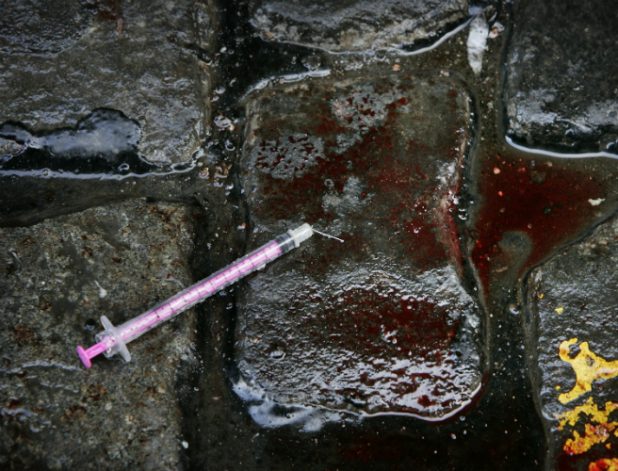It is no secret that that Dublin’s inner city continues to have a serious problem with chronic heroin addiction and the issues that result from it. For example, last year Dublin Fire Brigade dealt with 473 overdose incidents in Dublin, almost all in the inner city. Furthermore, a recent hse report has shown that rates of HIV continue to increase in Ireland, with intravenous drug use thought to play a significant role in that increase.
This year the government passed legislation that marks a significant transition in how the state tackles heroin addiction. In May 2017 both houses of the Oireachtas passed an amendment to the Misuse of Drugs Act that would allow organisations with exemption licences to operate what are known as Supervised Injection Centres (SICs). In essence a SIC is a place where intravenous drug users can legally consume their drugs under the supervision of medically trained staff. Health Minister Simon Harris said approvingly of the scheme that:
“Such facilities will provide sterile injection equipment, have staff to deal with possible overdoses and will alleviate the problems associated with street use such as drug litter”
While there is no immediate plans for the construction or location of the first SIC,it is likely to be based in the city centre with reactions that have been very strong and very mixed in the local community. Those who support SICs argue that it offers not only a safe and hygienic place for addicts to inject their drugs, thus shielding them from the more horrific wages of heroin addiction (such as overdose and infection), it also offers the addict the opportunity to avail of rehabilitation services, when they are ready.
Opposition to SICs tends to materialise along two main strands. Firstly those who are concerned about the level of anti-social/drug related behaviour that SICs could possibly bring to their communities. And secondly, those who question the efficacy of SICs, and feel they do addicts more harm than good.
Speaking with the local community in the Liberties area, this reporter met with both concern and outright opposition to the scheme. One elderly woman I spoke with in Meath Street said “I know they need somewhere to go, but this area can’t be dealing with junkies (sic) coming here from all over”. Another man argued that resources should go elsewhere saying “Why should money be spent on heroin addicts, they do it to themselves, spend the money on older people and kids ya know”. Their views seemed to be echoed by local councillor Mannix Flynn who said at a meeting about the subject in November last year that “What [injection rooms] are delivering is death….they will kill communities” and that “everyone will know where to get heroin now”.
There are also those involved in the treatment of heroin addiction who oppose such a scheme. For example, abstinence based addiction charity; the Aishling Group has stated unequivocally on their site that “The overriding answer is; no, supervised injection centres do not reduce the demand for drugs, or help the addict regain control over their lives”.
And there is evidence to suggest that many problems still exist in countries that operate supervised injection services. The Global Forum on Drugs Policy point to a study they conducted that found:
-
In Vancouver, the supervised injection program (INSITE) has been able to attract only 37% of heroin users in the area to use their service.
-
In Rotterdam, while 73% of service users availed of secondary services such as “meals”, only 37% availed of “medical care” and only 15% were interested in “safer drug use”.
-
In Hanover, only 22% of service users claimed improved injection hygiene.
Those in favour of the scheme question the methodology of surveying what tends to be an inherently transient and vulnerable population and accuse groups such as the Aishling Centre and GFoDP of ideological as opposed to evidence based opposition to supervised injection sites. They also point out that injection hygiene is already aided by programs such as needle exchanges. They argue that supervised injection sites would augment and solidify the progress already made by needle exchange programs.
Furthermore, those in favour of SICs can point to the myriad medical associations that have endorsed such programs. For example, the Vancouver Coastal Health Authority have concluded that such clinics significantly reduce“adverse health, social, and economic consequences of drug use without requiring abstinence from drug use.” A 2008 study also found that INSITE had prevented 3 overdose deaths and 35 HIV infections the previous year. In Germany, the European Monitoring Centre for Drug and Drug Addiction has stated that SICs prevented at least 10 overdose deaths last year and that “ The work of consumption rooms is statistically significantly related to the reduction of drug-related deaths.”
In answer to the charge that SICs would attract addicts and cause anti social problems, supporters make two important points. Firstly, these anti social problems already exist in areas likely to host a SIC. As a report from the Ana Liffey Drug Project points out that during the public hearing process about SICs there were over 400 complaints about drug injecting publicly in Dublin City Centre. Thus showing an already existing problem as opposed to one waiting to be created. They also point out that SICs would actually reduce the blatantly intimidating sight of addicts shooting up in public, by offering a more appealing alternative to addicts.
It should be pointed out though, that those in favour of SICs recognise that they have limitations. As Ana Liffey’s Tony Duffin points out, “no one is arguing that SICs are a magic bullet, but they are a progressive step in helping reach drug addicts, providing opportunities in a meaningful way, that 30 years of drug policy in Ireland has failed to do”









